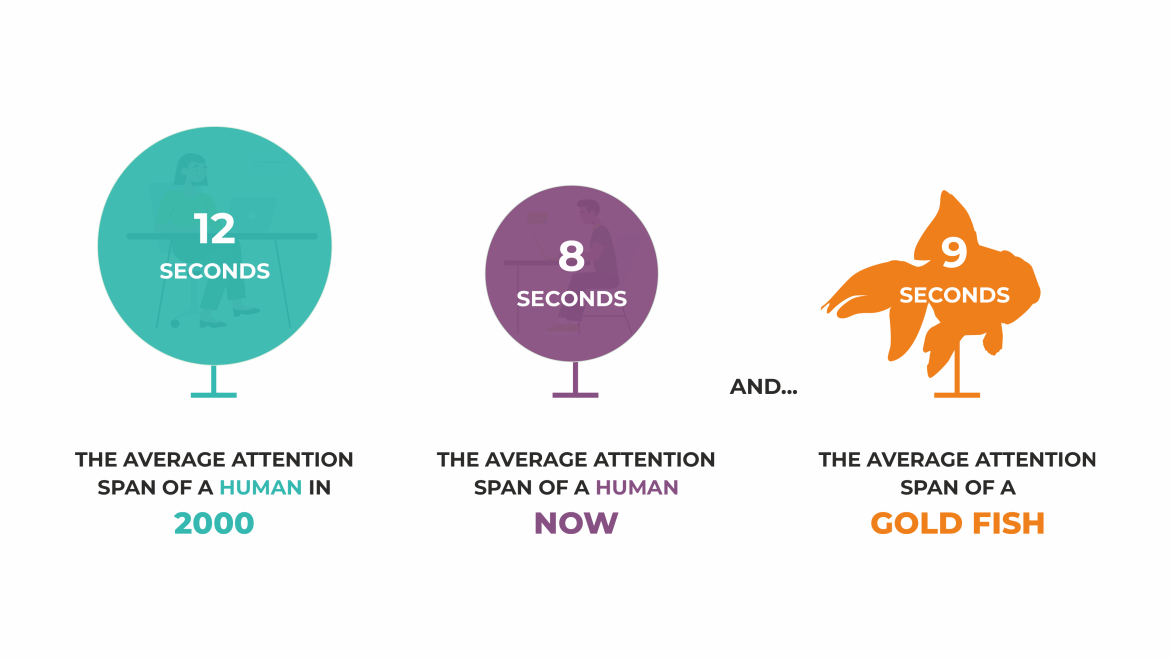Small is the New Big

Forget bulky manuals and forgettable seminars! With attention spans shorter than ever, we’ve even outpaced goldfish in the race for focus! As the Gen Alpha says, “ I don’t have a short attention span, I just get bored quickly!”
How do we manage the mind at work, especially during our learning sessions? How does the learning and development industry deal with this challenge?
L&D serves up bite-sized, engaging content that’s like a powerful punch for your brain. Studies show it boosts information retention by up to 20% compared to old-school methods. Why? Because microlearning fits snugly with our brain’s limits, breaking big topics into manageable chunks. Say goodbye to the forgetting curve as you easily digest key takeaways.
The bedrock for microlearning has been discussed since the 1950’s when Harvard-based cognitive psychologist George A. Miller coined “Miller’s Law.” Through a robust analysis of many past studies, Miller’s Law states that the average number of objects humans can hold in their short-term memory is 7 plus or minus 2.
Microlearning utilizes cutting-edge elements like interactive videos, gamified exercises, and lightning-fast quizzes, keeping you engaged and motivated. Platforms like Vyond and H5P offer tools to create interactive videos that keep learners engaged with clickable elements, quizzes, and embedded simulations. These videos can be tailored to address specific learning objectives and can be accessed anytime, anywhere. Apps like Duolingo and LinkedIn Learning provide bite-sized learning experiences optimized for mobile devices. This allows learners to fit learning into their schedules, whether during a commute, coffee break, or even while waiting in line.
One big challenge of microlearning is using resources wisely. Making good microlearning content takes time, effort, and money. Organizations need to spend on tools, software, and skilled designers. Plus, keeping the content up-to-date can be costly. Smaller organizations or those with tight budgets might struggle to afford these expenses.
Scaling microlearning can be tricky. Making short lessons for basic topics is usually easy, but more complex subjects might need a series of related lessons. It’s tough to keep the quality consistent and make sure everything aligns with company goals when there are a lot of microlearning materials to manage. Each microlearning module should be engaging and effective, which demands ongoing attention to detail. Also, aligning all these modules with the organization’s goals and standards can be difficult. When you have many modules, it’s crucial to keep everything cohesive and relevant to avoid confusing or diluting the learning experience. Balancing all these factors while scaling up can be a significant effort.
Hubspot reports that microlearning increases engagement and completion in online training by 4x. In the modern workplace, Deloitte’s assessment that employees have only 4.8 minutes per day for learning and development highlights the need for microlearning. Another important figure is Millennials’ preference for microlearning, with ATR Research reporting that 53% prefer on-the-job training to traditional formal education techniques. According to Boyette, 94% of L&D professionals favor microlearning over standard e-learning courses, demonstrating its effectiveness and popularity.
But microlearning isn’t alone in the learning world. It works together with performance support systems (PSS), forming a strong team that helps you do your job better. Imagine you’re about to deliver a presentation to a room full of clients, feeling a bit nervous about how to make a strong impression. Suddenly, your phone buzzes with a notification. It’s a microlearning module on public speaking techniques, offering practical tips to boost your confidence and captivate your audience. With just a few minutes of focused learning, you feel more prepared and ready to shine in your presentation. Microlearning can also be used to reinforce knowledge gained during initial training. By delivering short bursts of information spaced over time, it significantly improves long-term retention. No more information overload or post-training memory blackouts!
The rise of microlearning and its synergy with performance support represent a seismic shift in how we approach learning and development. Amidst the shifting tides of professional growth and development, let us lean on microlearning as a beacon, guiding us towards elevated performance, competence, and accomplishment.
References:
https://elai.io/microlearning-statistics

Vidula is a passionate end to end learning & development professional with more than 15 years of experience. In all these years, she has trained on a variety of topics ranging from soft skills to product & process and behavioural trainings. She has also helped organisations manage their performance matrix and conducted TNA’s and run competency skill mapping programs too.